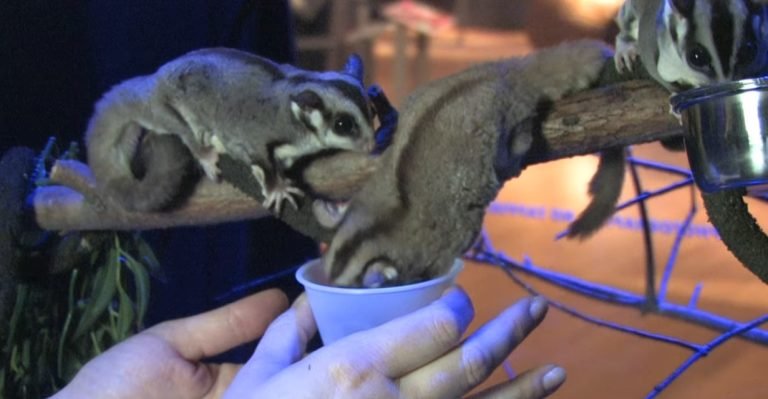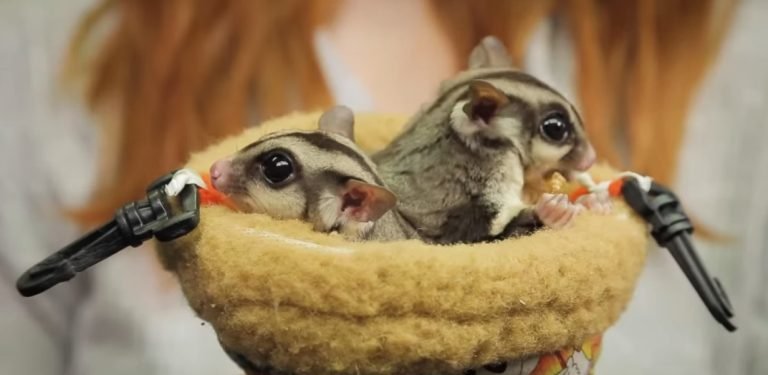How Dangerous Is A Sugar Glider
How Dangerous is a Sugar Glider?
Sugar gliders, with their small size and adorable appearance, have become increasingly popular as pets. These tiny creatures are native to Australia, Indonesia, and New Guinea and are known for their ability to glide through the air. However, many potential owners wonder just how safe it is to bring a sugar glider into their homes. In this article, we will explore the potential dangers and risks associated with owning a sugar glider and provide you with the information you need to make an informed decision.
Sugar gliders may be small, but they have sharp teeth and claws that they use for climbing and defending themselves. While they are generally docile and friendly, there are some risks involved in handling these creatures. Let’s take a closer look at the potential dangers and how to mitigate them.
Sugar Glider Bites and Scratches
Sugar gliders have sharp teeth and claws that they will use if they feel threatened or scared. While they are not generally aggressive animals, they may bite or scratch if mishandled or if they feel cornered. It’s important to handle sugar gliders gently and to respect their boundaries. Avoid sudden movements and loud noises that could startle them, and always approach them with caution.
If you do get bitten or scratched by a sugar glider, it’s important to clean the wound thoroughly to prevent infection. Sugar gliders can carry bacteria in their mouths and on their claws, so it’s essential to treat any injuries promptly. If you notice any signs of infection, such as redness, swelling, or discharge, seek medical attention.
Zoonotic Diseases
Zoonotic diseases are infections that can be transmitted between animals and humans. While sugar gliders can carry certain diseases, the risk of transmission is relatively low compared to other animals. However, it’s still important to take precautions to protect yourself and your family.

One potential zoonotic disease associated with sugar gliders is salmonella. This bacterium can cause diarrhea, fever, and stomach cramps in humans. To minimize the risk of salmonella infection, always wash your hands thoroughly after handling your sugar glider or cleaning its cage. Avoid touching your face or mouth before washing your hands, as this can transfer the bacteria.
Falls and Injuries
Sugar gliders are excellent climbers and gliders, but they are not infallible. They can fall from heights or misjudge their landing, resulting in injuries. It’s essential to provide a safe environment for your sugar glider and to supervise it when it is out of its cage.
Ensure that the cage is secure and that there are no gaps or openings that the sugar glider could squeeze through. Remove any hazards such as sharp objects or toxic plants from its living area. When allowing your sugar glider to roam outside of its cage, make sure the area is glider-proofed and free of dangers, such as open windows or other pets that could harm it.
Diet and Nutrition
Providing a proper diet and nutrition is crucial for the health and well-being of your sugar glider. While they are omnivorous and can eat a variety of foods, it’s important to offer a balanced diet to meet their nutritional needs. Feeding them an improper diet can lead to health issues such as obesity, dental problems, and vitamin deficiencies.
A sugar glider’s diet should consist of a combination of fruits, vegetables, proteins, and a specialized pellet diet. It’s important to avoid feeding them foods that are toxic to sugar gliders, such as chocolate or caffeine. Additionally, avoid feeding them high-sugar or high-fat foods as these can lead to obesity and other health problems.
Frequently Asked Questions
1: Can sugar gliders be house-trained?
Sugar gliders can be trained to use a litter box or designated area for toileting. However, accidents may still happen, especially when they are young or stressed.
2: Do sugar gliders require a lot of social interaction?
Sugar gliders are social animals and require daily interaction and stimulation. They bond strongly with their owners and should not be kept alone.
3: Can sugar gliders be kept as solitary pets?
Sugar gliders are highly social animals and should not be kept alone. They thrive in pairs or small groups and will become stressed and depressed if left without companionship.
4: What is the lifespan of a sugar glider?
Sugar gliders can live up to 12-15 years in captivity with proper care and nutrition.
Final Thoughts
While sugar gliders can make wonderful pets, it’s important to understand the potential risks and responsibilities that come with owning one. Proper handling, care, and a suitable environment are essential to ensure their well-being. If you are considering bringing a sugar glider into your home, be prepared for a long-term commitment and the need for social interaction and care. With the right knowledge and dedication, you can create a safe and fulfilling environment for these enchanting creatures. So, are sugar gliders dangerous? While they do present some risks, with proper care and precautions, the dangers can be minimized, and the rewards of owning a sugar glider can be enjoyed to the fullest.







